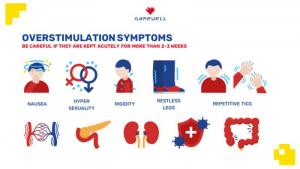Negativity bias: what it is and how it influences our thinking
How many of us have cared more about being told something bad than having said something good to us?
Human beings give more importance to what we see as something negative over what we consider positive or neutral. This phenomenon is what has been called negativity bias, and it is a concept that we will see in more detail below.
- Related article: "Loss aversion: what does this psychological phenomenon consist of?"
What is negativity bias?
The negativity bias, or negativity effect, is the tendency to give greater importance to negative aspects of a certain event, person or situation. It is the fact of giving more relevance to negative stimuli over those that can be positive or neutral. This psychological phenomenon has also been called positivity-negativity asymmetry and has a very significant impact on our daily lives.
For example, this phenomenon is what allows us to understand why people, when we meet someone new and know a negative trait of her, it seems that we focus exclusively on bad characteristics of the herself. This would generate a negative first impression, which could hardly be modified in the long term.
It also explains why people We tend to remember more those experiences in which some type of traumatic event has occurred or that we did not like, above those that have been pleasant to us. We are more aware of insults before praise, we react more strongly to stimuli negative than positive and we tend to think more often about the bad than the good that has last.
- You may be interested: "What is the Halo Effect?"
Elements that make up the phenomenon
When trying to explain negativity bias, the researchers Paul Rozin and Edward Royzman proposed the existence of four elements that compose it, which allow us to understand in more detail and depth how this asymmetry between the positive and the negative occurs.
1. Negative power
Negative power refers to the fact that when two events have the same intensity and emotionality but they are of different sign, that is, one positive and the other negative, they do not have the same degree of salience. The negative event will arouse more interest than a positive event with the same degree of emotionality and intensity.
Both Rozin and Royzman argue that this difference in the salience of positive and negative stimuli it is only comparable, empirically, through situations that suppose the same degree of intensity. If a positive stimulus has an emotional implication far above another stimulus, in that case a negative one, it is expected that in this situation the positive stimulus will be better remembered.
2. Negative inequality
When an event, be it positive or negative, is getting closer in time and space, the degree to which they are perceived as positive or negative is different. A negative event will feel much more negative as it gets closer compared to a positive event.
To better understand this: let's imagine two situations that involve the same degree of intensity, the beginning of the school year, seen as something negative, and the end of it, seen as something positive. As the start of the course approaches, this event is increasingly perceived as something much more negative than the end of the course, which is perceived as something that is progressively more positive but not so much.
3. Negative domain
The negative domain refers to the tendency that the combination of both positives and negatives results in something more negative than in theory it should be.
That is, the whole is much more negative than the sum of the parts, even if there is something positive between these parts.
4. Negative differentiation
Negative differentiation refers to how people we conceptualize the idea of negativity in a much more complex way than the idea of positivity.
This idea is not surprising if we try to make the effort to count how many words are part of our vocabulary and are related to negative aspects. We would get a bigger list than if we focused on the positive words.
- You may be interested: "Cognitive biases: discovering an interesting psychological effect"
Negativity, evolution and biology bias
It has been tried to give an evolutionary and biological explanation to the fact that people pay more attention to the negative aspects than to the positive ones. Next we will see what are the evolutionary and biological bases behind the negativity bias.
1. Evolutionary bases
According to neuroscientist Rick Hanson, the negativity bias is evolutionary in nature. According to him, this phenomenon is a consequence of evolution, since the first human ancestors learned to make intelligent decisions based on risk that would entail carrying them out. Those human beings who remembered negative events better and avoided them had a longer life expectancy than those who took more risks.
This pattern of behavior is the one that survived, being passed from generation to generation, and now this bias is something common throughout the human species, given its great adaptive implication in the past.
The human brain was shaped to give greater importance to the negative aspects, pay more attention to them and take into account potentially dangerous events for the physical, emotional and psychological integrity of the individual.
2. Biological bases
Studies carried out by the American psychologist John Cacioppo showed that Neural processing of negativity bias implies greater activation at the brain level compared to observing positive phenomena.
This would be the biological explanation that would support why humans pay more attention to the negative before the positive, going hand in hand with the evolutionary explanation of the point previous.
What was seen in the investigation
Below we will see in detail some of the aspects observed about the negativity bias and its relationship with social and cognitive processes.
1. Impression formation
As we have already seen, the negativity bias has a significant influence when forming the first impressions of a person we just met, something that has social implications considerable.
According to the aforementioned, negative information about a person exerts a greater weight when developing a general outline of the same, that is, an impression, that those positive data that have been made known to us about that person.
Although positive and neutral aspects are known, the negative ones end up prevailing, influencing the formation of the impression, something that is perfectly understandable if one of the elements of this bias is taken into account: the domain negative.
Another explanation given to explain the reason why negativity bias occurs in social contexts is the idea that people believe that negative data about someone help us establish a reliable diagnosis about your personality.
Negative information is supposed to be more reliable than positive data, which may have been exaggerated or seen as a result of chance.
This often explains the intention to vote. Many voters tend to give more importance to the bad thing a candidate has done and avoid voting for him rather than giving importance to the information of the desired candidate that turns out to be positive.
2. Cognition and attention
Negative information seems to imply a greater movement of resources at the cognitive level than positive information, in addition to having greater activity at the cortical level when more attention is paid to the bad than to the good.
The bad news, someone's negative traits, traumatic events… all these aspects act as a kind of magnet on our attention.
People tend to think more of those terms that turn out to be negative rather than positive ones, the large vocabulary of negative concepts being an example of this.
3. Learning and memory
Learning and memory are direct consequences of attention. The greater the attention focused on a certain event or phenomenon, the more likely it is that it will be learned and kept in memory.
An example of this, although controversial, is the way in which punishment exerts a greater weight on the memory than it does not reward it.
When someone is punished for having done something wrong, they are more likely to avoid carrying out that behavior which they assumed injury, while being rewarded for doing something right is more likely in the long run to forget about it. it.
Yes OK this should not motivate parents to punish their children more frequently For whatever reason, it is interesting to see how the processing of negative events, in this case punishment, seems to have a significant impact on children's education.
4. Decision making
Studies on negativity bias have also focused on how it influences ability decision-making, especially in situations where risk is avoided or risk is feared. lost.
When a situation arises in which the person can either gain something or lose it, potential costs, a negative, seem to outweigh potential gains.
This consideration of possible losses and avoiding them goes hand in hand with the concept of negative power proposed by Rozin and Royzman.
Bibliographic references:
- Rozin, P.; Royzman, E. B. (2001). "Negativity bias, negativity dominance, and contagion". Personality and Social Psychology Review. 5 (4): 296–320. doi: 10.1207 / S15327957PSPR0504_2
- Peeters, G. (1971). "The positive-negative asymmetry: On cognitive consistency and positivity bias". European Journal of Social Psychology. 1 (4): 455–474. doi: 10.1002 / ejsp.2420010405



